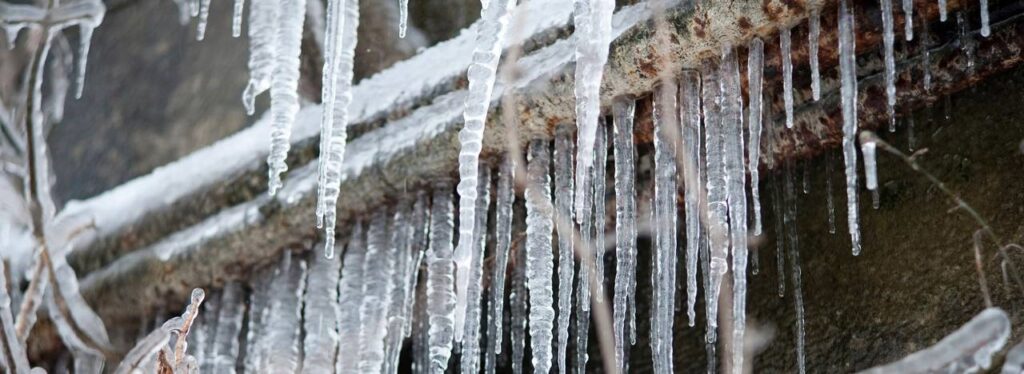Crucial Advice to Prevent Frozen Pipes in Cold Weather
Or Book Technician HereThe article listed below about Helpful Tips to Prevent Frozen Pipes this Winter is really captivating. You should check this stuff out.

Cold weather can ruin your pipes, especially by freezing pipelines. Here's exactly how to avoid it from taking place and what to do if it does.
Intro
As temperatures drop, the danger of icy pipelines rises, possibly leading to costly repair services and water damages. Comprehending exactly how to stop icy pipes is essential for home owners in cold climates.
Prevention Tips
Protecting prone pipes
Wrap pipes in insulation sleeves or use heat tape to protect them from freezing temperatures. Focus on pipelines in unheated or outside areas of the home.
Heating techniques
Maintain interior areas properly warmed, particularly locations with plumbing. Open up cupboard doors to allow cozy air to circulate around pipelines under sinks.
How to recognize frozen pipelines
Look for reduced water circulation from faucets, unusual smells or sounds from pipes, and visible frost on subjected pipelines.
Long-Term Solutions
Structural modifications
Take into consideration rerouting pipelines away from exterior wall surfaces or unheated locations. Include added insulation to attic rooms, cellars, and crawl spaces.
Upgrading insulation
Invest in premium insulation for pipes, attics, and walls. Proper insulation helps maintain consistent temperatures and reduces the threat of icy pipelines.
Shielding Exterior Pipes
Yard hose pipes and outside faucets
Detach and drain garden tubes prior to winter. Mount frost-proof faucets or cover outdoor taps with shielded caps.
Comprehending Frozen Pipelines
What causes pipelines to freeze?
Pipelines freeze when revealed to temperatures listed below 32 ° F (0 ° C) for prolonged durations. As water inside the pipes freezes, it increases, putting pressure on the pipe wall surfaces and possibly causing them to break.
Risks and problems
Frozen pipes can bring about supply of water disturbances, residential property damages, and pricey repair work. Burst pipes can flooding homes and trigger considerable architectural damages.
Indicators of Frozen Pipes
Identifying frozen pipelines early can stop them from breaking.
What to Do If Your Pipelines Freeze
Immediate activities to take
If you presume frozen pipes, maintain taps available to eliminate stress as the ice melts. Use a hairdryer or towels taken in warm water to thaw pipes gradually.
Final thought
Stopping frozen pipelines requires aggressive steps and quick actions. By recognizing the reasons, indications, and preventive measures, homeowners can shield their plumbing during cold weather.
6 Proven Ways to Prevent Frozen Pipes and Protect Your Home
Disconnect and Drain Garden Hoses
Before winter arrives, start by disconnecting your garden hoses and draining any remaining water. Close the shut-off valves that supply outdoor hose bibs and leave the outdoor faucet open to allow any residual water to drain. For extra protection, consider using faucet covers throughout the colder months. It’s also important to drain water from any sprinkler supply lines following the manufacturer’s directions.
Insulate Exposed Pipes
Insulating your pipes is an effective way to prevent freezing. Pipe insulation is readily available at home improvement stores and is relatively inexpensive. Pay close attention to pipes in unheated areas such as the attic, basement, crawl spaces, or garage. Apply foam insulation generously to create a buffer against the cold. You can also wrap your pipes in heat tape or thermostat-controlled heat cables for added warmth.
Seal Air Leaks
Inspect your home for any cracks or openings that could let in cold air. Seal any holes around the piping in interior or exterior walls, as well as the sill plates where your home rests on its foundation. Additionally, make sure to keep your garage door closed unless you’re entering or exiting. Leaving it open creates a significant air leak that can lead to frozen pipes.
Allow Warm Air Circulation
During cold snaps, it’s essential to allow warm air to circulate evenly throughout your home. Leave interior doors ajar to promote better airflow. Open kitchen and bathroom cabinets to help distribute heat consistently around the rooms. If you have small children or pets, be sure to remove any household chemicals or potentially harmful cleaners from open cabinets for safety.
Let Faucets Drip
A small trickle of water can make a big difference in preventing ice formation inside your pipes. When temperatures drop significantly, start a drip of water from all faucets served by exposed pipes. This continuous flow helps prevent the water from freezing. Additionally, running a few faucets slightly can relieve pressure inside the pipes, reducing the chances of a rupture if the water inside does freeze.
https://choateshvac.com/6-proven-ways-to-prevent-frozen-pipes-and-protect-your-home/

As a keen person who reads about Prevent Frozen Pipes , I assumed sharing that excerpt was a good thing. Do you know about somebody who is curious about the topic? Be sure share it. We take joy in reading our article about Winter Plumbing Precautions: Preventing Frozen Pipes.
Book 24/7